The Art of Special Cut Diamonds Explained
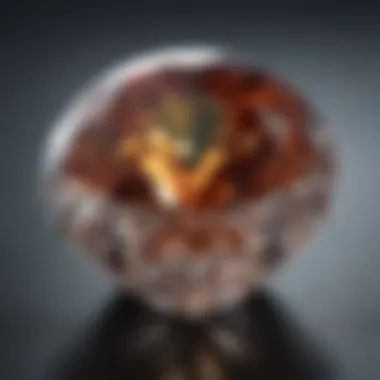
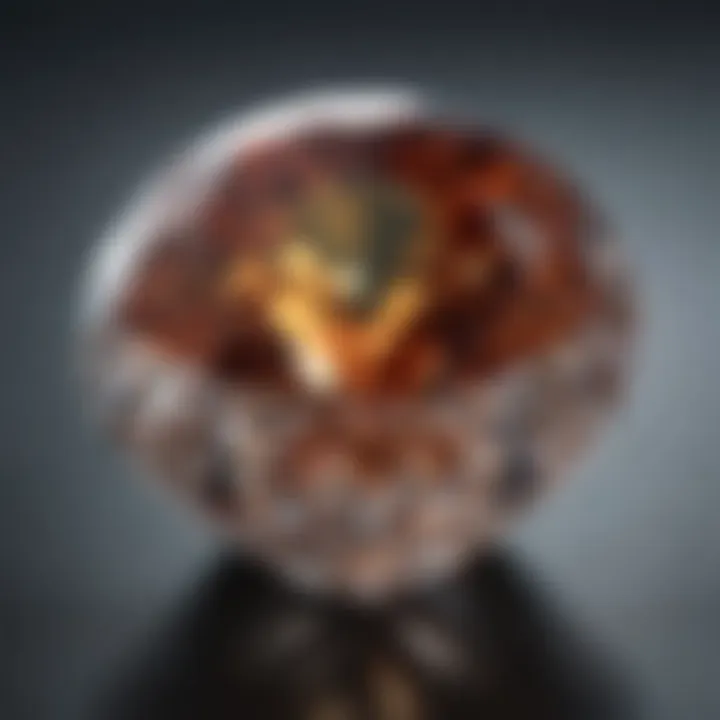
Intro
When it comes to the world of gemstones, diamonds often steal the spotlight. Yet, not all diamonds are created equal; some possess unique attributes that elevate their status to extraordinary heights. This article will take you on a journey into the realm of special cut diamonds, showcasing their defining features and unparalleled craftsmanship. Special cuts differ significantly from conventional shapes, introducing an intricate art that combines skill and creativity. By delving into the essence of these unique diamonds, we aim to broaden your appreciation and provide insights valuable to enthusiasts, collectors, and industry professionals alike.
Gemstone Overview
Definition and Origins
Special cut diamonds, unlike their more traditional counterparts such as round or princess cuts, are tailored to bring out the best in a diamond's natural beauty. These cuts often involve complex geometric patterns that demand significant expertise. The term "special cut" can encompass several designs, including but not limited to, the radiant, cushion, and marquise shapes. Each of these represents a distinct approach to maximizing brilliance and fire.
The origins of special cuts can be traced back centuries, evolving as artisans experimented with various techniques to exploit the optical properties of diamonds. The craftsmen of yore were driven by a desire not just to create a piece of jewelry, but to embody stories and emotions in their cuts. Today, the art has grown exponentially, particularly with advances in technology that allow for precision cutting.
Historical Significance
Historically, special cut diamonds have been valued not only for their rarity but also for the craftsmanship involved in their creation. Each historical era brought new influences:
- Renaissance: Artists of this period began to experiment with various facets, paving the way for more complex designs.
- Victorian Era: Demand for unique pieces skyrocketed, making the special cuts of that time sought-after commodities.
- Modern Times: The rise of technology has transformed the diamond industry, allowing for innovations in cutting and design that were previously unimaginable.
Understanding the historical context sheds light on today’s marketplace, as consumers increasingly seek pieces that convey not just beauty but also meaningful narratives woven over time.
Gemstone Properties
Hardness and Durability
Diamonds are renowned for their exceptional hardness, rating a solid 10 on the Mohs scale. This property is crucial for longevity in jewelry design. Special cut diamonds inherit this durability, making them as suited for everyday wear as they are for special occasions. When you consider a special cut diamond, think of it as a little piece of history, hence durability becomes essential to maintaining its allure.
Color and Clarity
In terms of color and clarity, special cut diamonds can vary widely. While traditional cuts often emphasize clarity and colorlessness, special cuts might embrace a wider palette. The beauty of these diamonds lies in their ability to reflect light in diverse ways, showcasing colors and tones that may not be as prominent in standard cuts.
- Color: Special cuts might exhibit subtle hints of color that enhance their overall appearance. Interestingly, some collectors seek specific tones for uniqueness.
- Clarity: When evaluating clarity in special cuts, one might find that inclusions can sometimes add character, rather than detract from it. Each imperfection tells a story, transforming the stone into a personal artifact.
As you navigate through the world of special cut diamonds, it’s crucial to keep in mind the delicate balance between these properties and the design’s intention, which can often shift a diamond’s place from ordinary to extraordinary.
"Special cut diamonds possess an enchanting ability to tell stories through their light and form, inviting us to see beyond mere shapes into their rich heritage."
Intro to Special Cut Diamonds
Definition of Special Cut Diamonds
Special cut diamonds are defined as gemstones that have been shaped in non-standard forms, which go beyond the conventional round, princess, or emerald cuts. They are characterized by their unique shapes, angles, and facets that often reflect light in extraordinary ways. Examples include heart, pear, or even abstract and custom designs. The appeal lies in their individuality; each diamond tells a distinct story based on its cut and the intention behind that cut.
These diamonds may showcase fancy colors that further highlight their special cuts. The art of creating these stones takes not only skill but also an acute understanding of how the diamond refracts light, enhancing its brilliance and overall appeal. As such, the special cut diamonds represent a merger of science and artistry, resulting in gems that not only sparkle but captivate.
Historical Context
The evolution of diamond cutting can be traced back centuries, evolving from simple forms to the extraordinary designs we see today. Historically, diamonds were sought for their durability and rarity rather than their shape. The early cuts like the rose cut were simple, meant to enhance the stone's natural sparkle, yet they laid the groundwork for more complex designs.
As the desire for unique and luxurious jewelry rose during the Renaissance, diamond cutting began to change. Artisans explored new techniques, leading to the creation of styles that we now categorize as ‘special cuts.’ In the late 20th century, advancements in technology and tools widened the possibilities of diamond artistry. Innovations such as computer-aided design systems allowed for greater precision and creativity, catapulting the notion of special cut diamonds into the mainstream.
Fast forward to today: the market is rich with various types of special cuts, and their importance cannot be overstated. They are not just pieces of jewelry; they signify personal stories, milestones, and memories. This historical trajectory underscores their value in both jewelry design and individual significance, establishing an understanding that will enhance appreciation among gemstone enthusiasts and jewelry collectors.
The Craftsmanship Behind Special Cuts
The art of crafting special cut diamonds goes beyond mere aesthetics; it’s an intricate dance of skill, precision, and innovative thinking. These special cuts require exceptional artistry, which elevates them from ordinary stones to sought-after treasures. In this section, we will delve into the details of diamond cutting, discussing the tools and techniques employed, as well as the skill and precision required to transform rough diamonds into brilliant works of art. Understanding these elements fosters appreciation among gemstone enthusiasts and collectors, providing insight into the dedication and expertise involved in every single cut.
Artistry in Diamond Cutting
Tools and Techniques
The tools and techniques utilized in diamond cutting are critical for achieving the desired artistry. Traditional tools like the diamond saws and grinders paved the way, but technology never sleeps. Today, laser cutting technology is all the rage in the industry. This highly precise method not only enhances the quality of cuts but also allows artisans to explore innovative designs that were once unthinkable. For instance, laser technology can produce intricate shapes and patterns that bring out the uniqueness of each stone, offering a distinct quality that stands apart from older methodologies that relied heavily on manual skills.
One notable benefit of these advancements is their ability to preserve more of the diamond's carat weight. While older techniques often resulted in more waste, contemporary methods minimize loss, making them a cost-effective and favorable choice for both jewelers and customers alike. However, this technology can also be a double-edged sword since it can lead to mass production, affecting the exclusivity of certain designs over time.
Skill and Precision Required
Cutting diamonds is not just about wielding tools; it demands an acute sense of skill and precision. Expert artisans, sometimes referred to as gem cutters, undergo rigorous training to hone their abilities. Their proficiency allows them to ascertain the best angles for each specific cut, maximizing the stone's brilliance and fire. The craftsmanship relies heavily on a deep understanding of how light interacts with a diamond’s facets to achieve optimal sparkle.
A key aspect of this skill lies in the ability to discern the subtle differences in clarity and color during the cutting process. This insight enables cutters to make informed decisions about how to shape and polish each stone. Moreover, this high level of craftsmanship can set the price point significantly, as a well-cut diamond is worth its weight in gold – or more! Nevertheless, achieving such precision can take years, sometimes even decades of practice.
Innovations in Diamond Cutting
Technology Advancements
The realm of diamond cutting technology has dramatically shifted, particularly in the last two decades. Advancements such as computer-aided design (CAD) and 3D printing have begun to revolutionize the way diamonds are shaped. These technologies introduce an entirely new realm of possibilities, enabling designers to create complex and unique cuts that were previously unimaginable. For instance, CAD permits precise planning; each facet can be optimized for the best light reflection, enhancing the final piece’s brilliance.
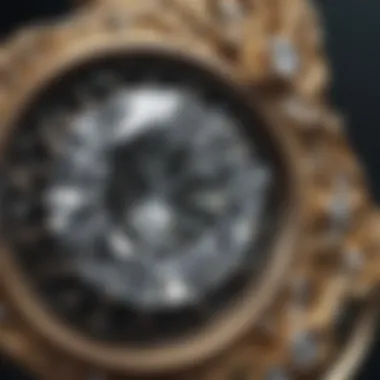
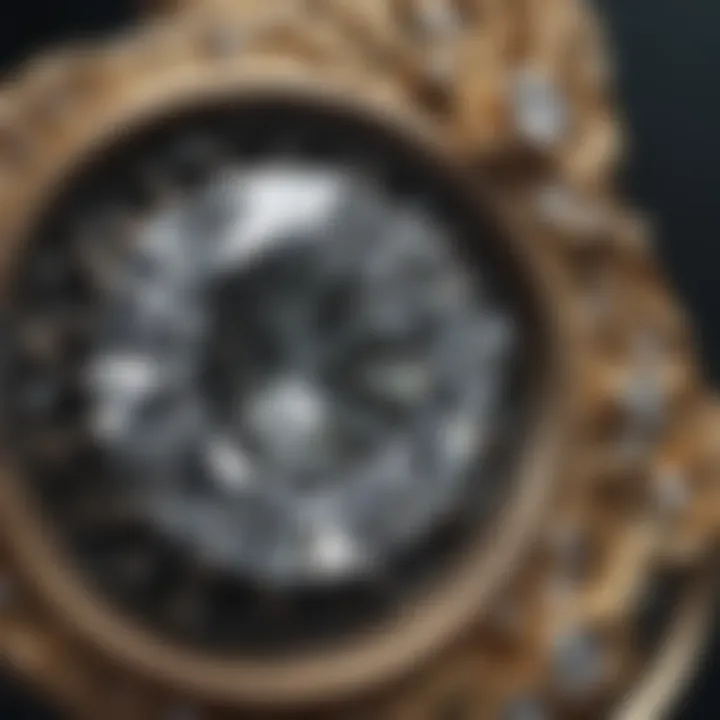
Despite the clear advantages, not all innovations come without drawbacks. Heavy reliance on technology sometimes leads to a loss of traditional craftsmanship, which some purists might argue should not be neglected. For the buyers, however, this technological leap allows for greater variety without sacrificing quality, assuming the appropriate checks and balances are in place.
Emerging Trends
Today’s diamond market is also witnessing a wave of emerging trends that reflect changing consumer preferences. One of the most notable trends is the increasing demand for ethically sourced and lab-grown diamonds. As consumers become more environmentally conscious, these alternatives have gained favor, and cutting techniques are evolving to meet this new demand.
Moreover, unique shapes like the cushion, oval, and pear cut are gaining popularity as buyers seek distinctive styles to reflect their personalities. Customization options have also grown, enabling customers to collaborate with artisans, leading to one-of-a-kind pieces.
The challenges that come with these trends involve maintaining the quality of cuts while also delivering on distinctiveness and ethical considerations. But, for many artisans, this inspires creativity and innovation, pushing the boundaries of what can be achieved in diamond cutting.
"Crafting a special cut diamond is not simply a profession; it’s a lifelong dedication to artistry and the intricate melding of tradition with innovation."
Popular Types of Special Cut Diamonds
In the realm of gemstones, the allure of special cut diamonds holds a distinct place, captivating both collectors and jewelry enthusiasts alike. This section delves into various popular types of special cut diamonds, illuminating their unique attributes and the reasons behind their prominence in the market. As the conversation shifts from traditional cuts to the innovative designs that define special cuts, understanding their benefits and considerations becomes paramount.
Brilliant Cuts
The "Brilliant Cut" is perhaps one of the most recognized designs, celebrated for its sparkle and light performance. This cut, typically featuring a round shape with numerous facets, maximizes brilliance and fire, making it a beloved choice for engagement rings and fine jewelry. The strategic arrangement of facets allows light to enter and reflect back beautifully, giving the stone a dazzling appearance. Collectors often seek out brilliant cuts not only for their aesthetic beauty but also for their value retention over time.
Fancy Shapes
Fancy shapes refer to diamonds that deviate from the conventional round cut, offering a range of silhouettes that cater to diverse preferences.
Princess Cut
The Princess Cut stands out as a popular choice among diamond aficionados, particularly for its modern, geometric appeal. Characterized by its square shape and sharp, uncut corners, this cut enhances the diamond's natural clarity and brilliance. One of its key characteristics is the ability to showcase color without compromising on brilliance, making it a favorable option for buyers looking for an elegant yet contemporary piece.
However, its unique feature, which is a base structure that allows for substantial light reflection, can also lead to more visible inclusions when compared to other cuts. For those aiming for a balance of style and sophistication, the Princess Cut is certainly a compelling pick.
Emerald Cut
The Emerald Cut is synonymous with sophistication and elegance. With its step-cut facets and rectangular shape, this design emphasizes the stone's clarity and color rather than a brilliant sparkle. A distinctive trait of the Emerald Cut is the large table facet, which offers a panoramic view of the diamond's internal structure. This cut often appeals to those who appreciate understated luxury and clarity, allowing the wearer to enjoy the gem’s innate color without overwhelming flashiness.
That said, its showcase of imperfections can be a drawback, as any inclusions become more apparent due to the cut's large, open facets. Still, many consider its classic look a worthy trade-off for its charm.
Heart Cut
For romantics, the Heart Cut offers a captivating twist, making it a celebrated symbol of love. This distinctly shaped diamond features two rounded lobes at the top, tapering down to a point. Its most striking quality is its emotional significance—often chosen for engagement rings and gifts meant to express deep affection. The Heart Cut requires notable skill from the cutter to achieve its symmetrical form, and when done well, it can truly be a stunner.
Nevertheless, potential buyers should be conscious of how light performance can vary with this cut. Not all Heart Cuts sparkle equally, as the shape can sometimes affect brilliance, which is essential for many jewelry collectors.
Asscher Cut
The Asscher Cut, similar to the Emerald Cut, boasts a square shape and step facets that create a vintage vibe. Its distinctive style originated in the early 20th century and has experienced a resurgence in popularity. The Asscher Cut's unique characteristic lies in its high crown and small table, which together create a mesmerizing optical effect known as the "hall of mirrors"—light reflecting off the geometric facets gives the diamond an extraordinary glow.
As preferred by some collectors looking for a unique yet timeless aesthetic, the Asscher Cut can also present challenges. Its detailed cut makes clarity paramount, so finding a high-quality Asscher can be a bit tricky. Despite these considerations, its classical beauty ensures it remains a desirable choice in the world of special cut diamonds.
Unique Experiments in Design
As the diamond industry continues to evolve, custom designs and limited editions have become a fascinating avenue for collectors and jewelry creators. These unique experiments in design not only showcase individual creativity but also allow buyers to own something truly one-of-a-kind.
Custom Cuts
A growing trend in the diamond market is the demand for custom cuts. These diamonds are meticulously crafted to meet specific desires, whether in terms of shape, size, or even personalized features. The key characteristic of custom cuts is their tailored nature, allowing clients to express individuality. This personalization can range from slight modifications to entirely bespoke designs, making the diamond truly theirs.
However, while custom cuts allow for expression, they also come with considerations regarding resale value and market appeal. A uniquely cut diamond may not always attract prospective buyers, potentially affecting investment potential in the long run.
Limited Edition Designs
Limited edition designs take exclusivity to another level, as they represent a finite number of pieces created by renowned jewelers or designers. This strategy not only heightens the desirability of the diamond but also often incorporates unique design elements or themes that reflect a specific vision. Collectors often see these pieces as not just jewelry but as art, further enhancing their market value.
Yet, the drawback to such exclusivity is that once the limited stock is gone, they may never return, making the timing of the purchase critical. For collectors motivated by rarity and artistry, investing in limited edition pieces can be both rewarding and potentially profitable in time.
Remember, special cut diamonds are not merely stones; they are expressions of craft, desirability, and a reflection of personal taste. Each type offers a unique character, and understanding these nuances can significantly enhance your appreciation for these marvelous gemstones.
Comparing Special Cut Diamonds to Traditional Cuts
When it comes to diamonds, there's a world of difference between special cut diamonds and traditional cuts. This section shines a spotlight on those distinctions that set them apart, which is critical for anyone looking to purchase, evaluate, or simply understand the allure of these remarkable stones. Understanding these differences can greatly impact one’s decision whether for personal use or investment, as special cuts often carry unique value propositions.
Key Differences
Symmetry and Proportions
Symmetry and proportions matter a lot when considering diamond cuts; they’re as fundamental as the foundation of a building. In traditional cuts, like the round brilliant, precision symmetry is a must. This ensures that light reflects uniformly, giving the stone its characteristic sparkle. On the other hand, special cut diamonds can play with these norms, which can result in stunning, one-of-a-kind aesthetics.
Think of it this way: the Asscher cut leans towards a vintage charm with its squared, intricate facets, while the brilliant cut opts for rounded simplicity. This variety allows wearers to express personal styles without conforming to cookie-cutter designs.
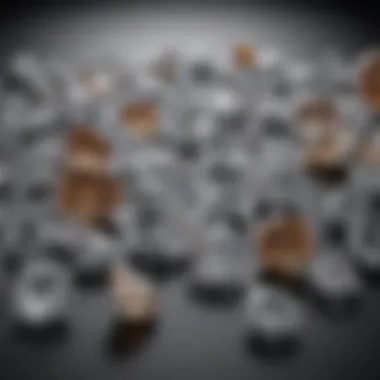
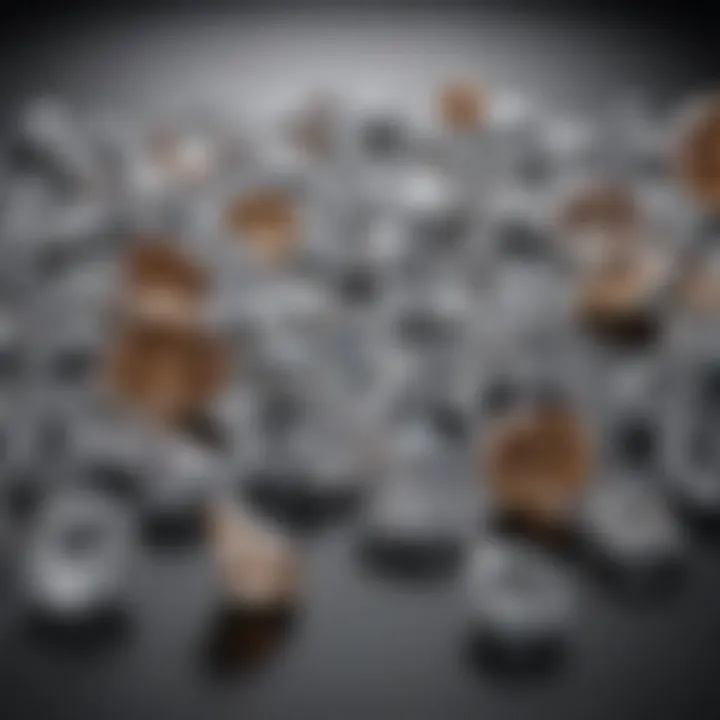
However, this comes with a catch. Some special cuts may not achieve the level of sparkle found in those traditional cuts because they prioritize artistic expression over heartbeat-uniform symmetry. That said, many collectors appreciate this very fact—opting instead for creativity, flavor, and uncommon beauty over a mere reflection of light.
Light Performance
Light performance is perhaps one of the most compelling aspects when it comes to assessing the worth and beauty of a diamond. A diamond's ability to play with light can transform its appearance. Traditional cuts, especially the standard round brilliant, are designed to maximize light return, meaning they reflect more light back to the eye due to their expertly calculated facets.
Contrastingly, special cuts can have varying light performances depending on their design. For instance, the fancy shapes like a heart or emerald cut prioritize form over function. The result? Spectacular visual effects that can shine with elegance yet may not reflect light as consistently as their traditional counterparts.
These unique designs tempt those who seek something different, a piece that tells a story. However, while they have their own unique style, collectors should be aware that certain cuts like the marquise or pear may not always provide the same scintillation as a standard round cut. Understanding this nuance is essential for making informed decisions in both purchase and appreciation.
Market Trends and Demand
The diamond market is an ever-shifting landscape, with consumer preferences affecting availability and pricing significantly. In today’s climate, there’s been a noticeable uptick in the appetite for special cut diamonds. Closer examination reveals shifting perspectives in taste; where traditional cuts once dominated, there is now a growing crowd that embraces individuality.
Trends show that consumers are becoming more adventurous, seeking unique styles that are a cut above the rest. This shift not only reflects personal taste but also signifies a broader change toward customization in jewelry design.
Moreover, millennials and Gen Z are increasingly interested in jewelry that embodies personal stories, experiences, and emotions, paving the way for a more diverse market. This of course, adds potential value and demand for these special cuts over time. As buyers grow savvier and discerning, special cut diamonds not only fulfill aesthetic desires but also hold an investment potential that mirrors this dynamic cultural shift.
Every unique diamond holds a narrative, making each purchase a personal decision beyond just a choice of style.
Evaluating Special Cut Diamonds
Evaluating special cut diamonds is a crucial aspect of understanding their value and selecting the perfect stone. Unlike traditional cuts, which have standardized grading, special cuts often require a more nuanced assessment. This process is twofold: it not only involves analyzing the intrinsic qualities of the diamond itself but also understanding the market dynamics that influence their desirability. By examining various elements, one can make informed decisions that reflect both personal taste and investment goals.
Factors to Consider
Evaluating special cut diamonds involves several key factors that cater to both aesthetics and market valuation.
Cut Quality
Cut quality is fundamental when it comes to assessing the brilliance and overall presence of a diamond. It’s not just about how it looks, but how it's made. A high-quality cut allows light to enter and reflect through the stone in a manner that enhances its sparkle. This characteristic is often what separates an exceptional diamond from an average one. A popular choice for buyers who value both beauty and investment potential, cut quality’s most unique trait lies in its ability to influence how a diamond appears under different lighting conditions.
The advantages of focusing on cut quality include:
- Aesthetic Appeal: Diamonds with superior cut quality exhibit dazzling fire and sparkle.
- Market Demand: High cut grades can command better prices when reselling.
However, it’s worth noting that a diamond’s high cut quality doesn’t always equate to affordability. Often, consumers must balance their desire for perfection with their budget constraints.
Color and Clarity Grades
Color and clarity grades are essential in evaluating the overall quality of special cut diamonds. These factors affect perception and desirability significantly. Color refers to the presence of hue in a diamond, with less color often being more prized. Clarity, on the other hand, indicates the presence of internal flaws or inclusions. Achieving a balance between these two elements can result in a diamond that is not only beautiful but also holds its value over time.
The key features of color and clarity grades include:
- Value Retention: High clarity and color ratings typically translate to higher market value.
- Visual Quality: Diamonds with fewer inclusions and minimal color distractions appear more luminous.
While higher color and clarity grades enhance appeal, they may also elevate costs. This necessitates careful consideration when selecting a diamond to ensure that it aligns with personal preferences and financial capability.
Certifications and Appraisals
Certifications and appraisals provide the assurance necessary for confident purchases in the diamond market. They validate the claims regarding a diamond's quality and help buyers understand what they are acquiring.
GIA and IGI Standards
The GIA (Gemological Institute of America) and IGI (International Gemological Institute) are two of the most respected grading organizations in the field. Belonging to these standards means that the diamond has undergone rigorous evaluation criteria. GIA and IGI are recognized globally, which enhances the confidence buyers may have in their acquisition. One specific characteristic of these certifications is their unbiased nature, as they provide a comprehensive overview of a diamond’s attributes without the seller's influence.
Benefits of adhering to these standards include:
- Trustworthy Evaluation: The integrity of the grading process fosters buyer confidence.
- Market Recognition: Diamonds with recognized certifications typically enjoy better resale value.
However, it’s important to reaffirm that not all diamonds graded by these institutions are automatically superior. Understanding what each grade means is essential for making a knowledgeable purchase.
Importance of Grading Reports
Grading reports are vital documents that outline all the necessary details regarding a diamond’s characteristics. These reports serve as a guide, allowing buyers to compare different stones and make decisions based on factual data rather than subjective opinions. Grading reports usually delineate various attributes including, but not limited to, cut quality, color, clarity, and carat weight.
This transparency provides several advantages:
- Informed Choices: Buyers are empowered to choose based on factual information, mitigating the emotionality of the buying process.
- Value Certification: A grading report can bolster a diamond's value and appeal in the market.
On the flip side, relying solely on grading reports without doing additional market research can lead to oversight of potential price discrepancies that may be based on market trends rather than intrinsic quality.
Overall, evaluating special cut diamonds requires attention to detail, understanding of nuanced factors, and a commitment to informed decision-making. By carefully considering elements like cut quality, color and clarity, and the role of certifications, buyers can cultivate a priceless selection that exceeds mere materialism—anchoring investments in love, legacy, and personal significance.
Caring for Special Cut Diamonds

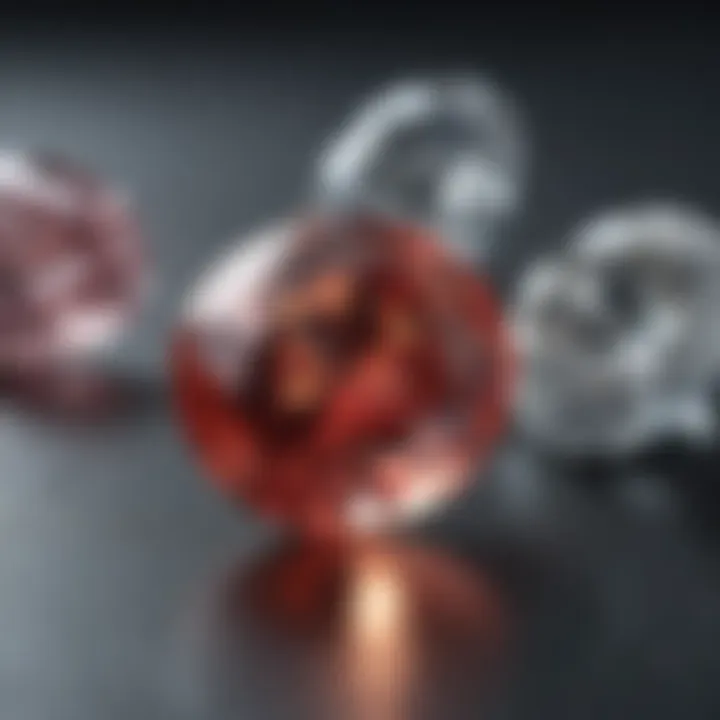
Taking good care of special cut diamonds is crucial for preserving their beauty and value. Unlike traditional cuts, special cuts often have unique facets and intricate designs, meaning they may require specific care routines tailored to their distinctive shapes. Neglecting these diamonds can lead to dullness, scratches, or even damage that may detract from their appeal. By understanding how to properly clean and store these gems, you ensure they retain their sparkle and status in the marketplace.
Cleaning Techniques
Safe Cleaning Solutions
When it comes to keeping special cut diamonds looking their best, using safe cleaning solutions is essential. Numerous commercial cleaners claim to work wonders, but many contain harsh chemicals that can harm certain finishes or treatments applied to the diamond.
A simple mix of warm water and a drop of mild dish soap, often recommended by jewelers, has a reputation for being both gentle and effective. Not only does it remove dirt and oils, but it is also a beneficial choice since it’s readily available and easy to prepare. Furthermore, using a soft toothbrush can help reach those tricky angles and crevices without risking scratches.
However, it's vital to avoid abrasive materials like scrubbing pads or any solution containing ammonia, as they can chip the edges of delicate facets. So, opting for a mild, non-abrasive cleaner is the best way to maintain the beauty of your diamond while preventing harm.
"A little care goes a long way when it comes to preserving the allure of special cut diamonds."
Frequency of Care
How often you clean your diamond has immense impact on its long-term condition. It's typically recommended to give your diamond a good clean every few weeks or whenever you notice a dullness or buildup of grime.
The beauty of consistent cleaning is that it helps maintain the diamond's clarity and shine. Frequent care prevents deeper stains from setting in, which can be harder to remove later. However, one must strike a balance. Over-cleaning may wear down settings or treatments, particularly in intricate special cuts.
So, the key here lies in being observant. If your diamond sparkles like the first day, then perhaps wait a bit longer between cleans. However, if it starts losing that luster, don’t hesitate to reach for that warm, soapy mixture again.
Storage Considerations
Preventing Damage
Once you've cleaned your special cut diamond, proper storage is your next line of defense against unwanted damage. Storing your diamonds along with other jewelry might seem convenient, but it poses a risk. Gems can scratch each other, particularly those with sharper edges or unique shapes. That's why it's best to invest in a dedicated jewelry box with individual compartments.
A soft fabric pouch or a lined case will not only protect your diamonds from scratches but also minimize the risk of getting tangled with other pieces. The key characteristic of preventing damage lies in thoughtful organization—keeping those precious gems separated can significantly extend their life.
Moreover, if you're storing away a loose diamond, wrapping it in a soft cloth or sponge can serve as an additional protective measure while in storage, keeping it snug and secure.
Optimal Environment for Storage
Diamonds, while tough, aren’t invincible when it comes to environmental factors. Storing them in a suitable environment can mean the difference between a timeless piece and a tarnished memory. Avoid placing your diamonds where they might be exposed to extreme temperature fluctuations, humidity, or direct sunlight for long periods.
The optimal environment for a special cut diamond is a cool, dry place, ideally between 60°F and 70°F (15°C to 21°C), away from windows and heat sources. This helps to preserve not just the clarity but also the structural integrity of both the diamond and its setting.
Also, keeping your storage unit organized, with plenty of space to breathe, can prevent unintentional pressure points from forming during storage, thus protecting the diamond's delicate facets.
In summary, caring for special cut diamonds requires a delicate balance of cleaning, observation, and thoughtful storage to ensure their lasting beauty and value.
The Value of Special Cut Diamonds in the Market
The topic of special cut diamonds holds a significant position in the broader landscape of gemstones and jewelry. As these diamonds stand apart not just by their shape and artistry but also in their market valuation, exploring their worth provides valuable insights for both collectors and enthusiasts. Special cut diamonds are not merely aesthetic achievements; they embody unique investment opportunities tied to rarity and craftsmanship. Understanding their market value is essential for those looking to navigate this luxurious field wisely.
Investment Potential
Investment in special cut diamonds is often viewed as a dual-edged sword. On one hand, their distinct beauty and scarcity can drive their prices sky-high, appealing to collectors who value rarity. On the other hand, the unpredictable nature of the diamond market makes it crucial for investors to tread carefully.
Investors should focus on the reputation of the diamond dealer and the certification from respected organizations like the Gemological Institute of America. The brand value associated with specific cuts can greatly impact how much buyers are willing to pay. In many cases, diamonds with unique cuts reflect not just individuality but an investment in creativity, making them stand out both in personal collections and on the resale market.
Resale Value
Resale value is a pivot point that often weighs heavily on the minds of buyers when considering special cut diamonds. The key to a successful resale lies in several influencing factors that can enhance or diminish the price.
Factors Affecting Resale
One significant aspect is the overall craftsmanship of the diamond. Cut quality, clarity, and color all play crucial roles in determining how much a diamond might fetch on the market. Diamonds that have been uniquely crafted and certified tend to hold their value better. The slight imperfections that may occur during cutting can impact resale potential significantly.
- Condition of the Gemstone: Like any luxury item, the wear and tear on the diamond impacts resale value. Keeping the stone pristine can enhance its allure to future buyers.
- Market Demand: Geographical and temporal shifts can create high demand for specific cuts, making timing essential in selling. Doing research on current trends helps gauge the potential return on investment.
Market Fluctuations
Market fluctuations in the diamond industry can be dramatic and sudden. These changes can significantly impact the value of special cut diamonds. Factors like changes in fashion trends, economic conditions, and even seasonal gifting trends play a role.
- Trend Awareness: An understanding of shifting consumer preferences, such as a rise in demand for distinctive diamond cuts, is crucial for anyone looking to buy or sell. Keeping an ear to the ground about what is hot and what’s not can be a gamechanger.
- Global Economic Influences: When economies fluctuate, so does the luxury market. Economic downturns often lead to decreased spending on non-essential items like high-end jewelry. Conversely, a robust economy can trigger a spike in spending, affecting demand and thus resale value.
"Understanding the factors influencing the value and market dynamics of special cut diamonds is fundamental in bridging the gap between mere ownership and wise investment."
In summary, the value tied to special cut diamonds isn't static; it fluctuates based on various elements, from quality of craftsmanship to shifting market trends. By arming themselves with this knowledge, gemstone enthusiasts and collectors can enhance their chances of making informed decisions.
The End
Wrapping up this exploration of special cut diamonds, it becomes evident that their significance goes well beyond mere aesthetics. These gems present a rich tapestry woven from history, artistry, and innovation that contributes to their unique value in the market. Understanding the intricacies of special cuts fosters a deeper appreciation among gemstone enthusiasts and jewelry designers, highlighting the labor and creativity involved in each piece.
Special cuts not only elevate the visual appeal of diamonds but also present distinct investment opportunities. The rarity of certain styles and the craftsmanship that goes into making these cuts can significantly influence their value. As trends evolve, so too does the demand for unique shapes and designs in the market. This offers a chance for collectors to strategize their purchases, investing in pieces that resonate both stylistically and financially.
Additionally, the specialized care and maintenance of these diamonds are paramount. Understanding how to clean and store special cuts preserves their brilliance and longevity, ensuring that they retain their allure for generations to come.
"The value of a diamond transcends its weight; it encompasses artistry, history, and the ability to tell timeless stories."
With the information covered in this article, both newcomers and seasoned collectors can navigate the world of special cut diamonds with confidence. They can assess what makes each gem unique and determine their own preferences based on market tendencies and personal taste. In the end, the journey into the heart of these exquisite stones not only enriches knowledge but also elevates the appreciation for what they represent.



